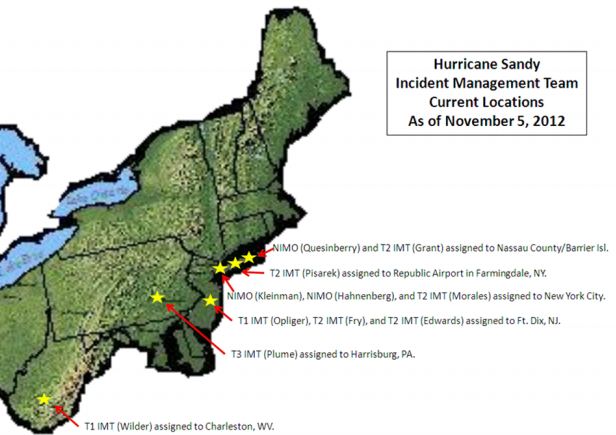(UPDATED at 10:18 a.m. EDT, May 6, 2015)

From Syracuse.com:
Ellenville, N.Y. — A wildfire at the edge of the Catskills mountains in New York state has burned 2,400 acres and is still spreading, according to news reports.
The state brought in an air tanker — the first time one has been used in New York, according to the Middletown Times Herald-Record. In addition, two Blackhawk helicopters with 660-gallon buckets have been sent to the fire, the state said.
The Shawangunk fire is about 75 percent contained, the manager for the state’s response team told the The Journal News. Fire officials told the newspaper that no homes had been burned, and they believed the fire was started by a homeowner burning debris, which is illegal in New York.
****
(UPDATED at 1:05 p.m. EDT, May 5, 2015)
The Roosa Gap Fire in Ulster County in New York state has grown to about 1,700 acres, requiring the evacuation of some homes in the Cragsmoor area along Route 52. There are reports the fire has jumped the highway.
#RoosaGap fire east of Monticello, NY. Looks like a scene out west! #nywx #pawx. pic.twitter.com/3yqhgiMK0H
— NWS Binghamton (@NWSBinghamton) May 5, 2015
Forest Fire along the Shawangunk Ridge here where I live I took this.. pic.twitter.com/57MTFh2zoX
— Thomas J. Colatrella (@TJWoodstockNY) May 4, 2015
****
(Originally published at 5:25 p.m. EDT, May 4, 2015)

A fire that was reported Monday morning had burned about 800 acres east and northeast of Summitville, New York by 4 p.m. ET. Recordonline reports that 15 homes are being evacuated in the Walker Valley area (map) along Route 52 in Ulster County.
Sullivan County Public Safety Commissioner Dick Martinkovic said at least 24 fire companies from three counties – Sullivan, Orange and Ulster – are assisting in fighting the fire. There are no reports of structures burning since it has been primarily located in rural areas of the Roosa Gap and Shawangunk Ridge State Forests. However that could change when it approaches Route 52.
On Monday the fire was pushed by sustained winds of 10 mph with gusts up to 20 mph.
New York, along with several other states in the area, is under a Red Flag Warning today.
The weather should offer some relief on Tuesday, with wind speeds between 1 and 3 mph, more than 80 percent cloud cover, and a 42 percent chance of rain.













